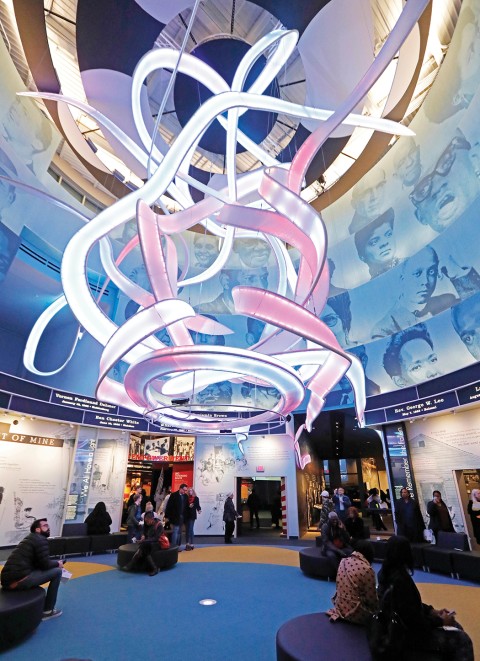A pair of museums are reckoning with Mississippi’s racist past
But they don't say enough about racism in the present.

If a set of museums could represent what historian Ibram X. Kendi calls a “dual and dueling history of racial progress and the simultaneous progression of racism,” the Mississippi Civil Rights Museum and Museum of Mississippi History, which opened side by side in December 2017, just might be it. Two speeches given within one year on the museums’ shared grounds help to reveal this continuing tension in the state of Mississippi and the soul of our nation.
At the close of the November 2018 runoff election for a U.S. Senate seat, Mike Espy stood in the Civil Rights Museum and voiced hope that “Mississippi’s future will be brighter than Mississippi’s past.” Had he won, Espy would have been the first African American senator from Mississippi since 1868. Instead, Cindy Hyde-Smith, who’d joked about attending a public hanging—claiming ignorance of the racist implications of such a statement—won the election. Hyde-Smith, who also spoke in favor of voter suppression and was photographed wearing Confederate regalia, won with the strong endorsement of President Trump. At the opening of the museums a year earlier, Trump had read a prepared speech in which he strayed from his notes only to say, “I do love Mississippi, it’s a great place . . . I’ve had a lot of success in Mississippi.”
Last September, I visited these two new museums in Jackson as part of a series of road trips I’ve been making throughout the South. As a biracial Christian raising my family in the rural South, I’ve been trying to put my fingers into the wounds of racism. I wondered how a state like Mississippi—with a legacy of extrajudicial, racially motivated killings and systematic refusal to extend voting rights and equal access to education, employment, and housing to African American citizens—would be able to accurately curate its shameful past or address current racial divides.




